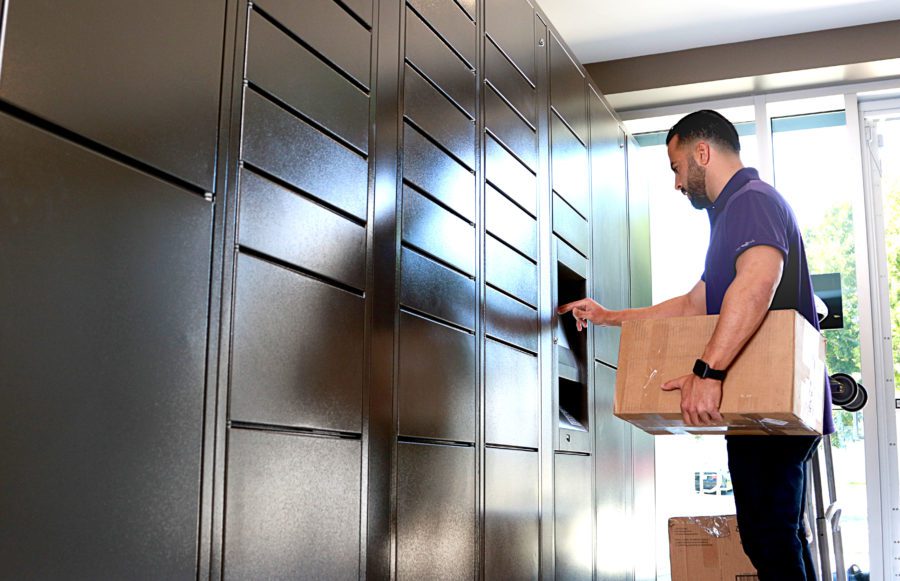
Retail
How to Streamline E-Commerce Returns Management
Written by: Parcel Pending
6 Min Read
Published: May 13, 2019
Updated: October 10, 2024
ECommerce returns are becoming a normal part of the buying cycle. Because consumer convenience is the key to brand loyalty, it is essential you adapt your order fulfillment strategy to provide a streamlined, convenient return process. Reports collected by Invesp confirm that 92% of customers will buy or order from a store again if the return process is made easy1.
Having a streamlined process for eCommerce returns and returns management for your eCommerce store will both improve the quality of your customer support and will lower the overall cost of dealing with returns. This begs several important questions. How can you manage and streamline eCommerce returns? And how can you capitalize on the benefits of an effective returns process? We’ll answer these questions and more below.
Customer Returns Are Increasing
Although the customer return rate normally hovers between 25–30%, post-purchase customer experience platform Narvar reports that they skyrocketed to 70% in 20202. Apparel in particular leads the pack with the greatest product return volume – an estimated 46.5% return rate3. Footwear follows close behind, with one expert estimating that for every pair of shoes kept, two to three are returned4.
With more consumers turning to eCommerce for their day-to-day shopping, this increase in eCommerce returns is expected to continue. Experts speculate that there are a few key reasons why this is the case:
- Attitudes about product returns are changing – Kate Reidel, Parcel Pending’s SVP of Business Development, explains: “Pandemic consumers who went online to shop for clothes often resorted to bracketing, buying multiple sizes, since they didn’t know exactly what they’d need. This has exacerbated the expense of managing returns.”
- The returns process is cheap and easy – When a customer buys the wrong product or multiple sizes of a single product, they can easily return the item, oftentimes at no charge, directly to the retailer. Most companies provide free return shipping with a printable return label, with some even offering a “no questions asked” return policy. In fact, free return shipping is now a consumer “must-have” rather than a “nice-to-have”.
- The advent of buy online return in-store – Another option retailers are providing for their customers is buy online return in-store (or BORIS). Fulfilling a product return by mail can be a pain for customers, as this often means waiting several weeks for a full refund. With BORIS, a consumer can easily make a product return without dealing with shipping labels or packaging – and get a full refund within 24-48 hours. And, for retailers who don’t want to worry about staff time spent managing the product return process, retail parcel lockers can make the consumer returns experience easy and convenient.
- Retailers embracing a “try before you buy” approach – Several eCommerce retailers are allowing customers to try a product before making their online purchase. For instance, bedding company Buffy allows customers to try their products for free for 10 days; if the customer doesn’t return their product within the free return period, the company considers the item(s) bought. This method of shopping may have a more significant impact on the way consumers think of the return experience in the future.
Preparing for the “Next Normal” of eCommerce Returns Management
With an average product return rate on the rise, companies must come up with new supply chain strategies and return solutions to handle them. In fact, the National Retail Federation reports that “spending on global reverse logistics technologies will spike in 2021 — forecast last year to hit $604 billion by 2025 — as retailers seek to alleviate a major pain point in the shopping journey and minimize the costs of returns”5,6.
This means the advent of a number of new retailer initiatives (e.g., creating new departments) for the sole responsibility of streamlining the returns process for customers and returns management for the retailer and its warehouses. This can be an expensive process and often involves:
- Hiring employees
- Finding additional warehouse space
- Spending money to repair or replace returned goods
- Paying for return shipping
- Implementing reverse logistics solutions such as retail parcel lockers
While the upfront investment for reverse logistics can be high, it is essential for a retailer to keep customer service and customer convenience as the forefront objective, as meeting customer expectations significantly increases a retailer’s customer retention rate. To put it simply, a customer’s lifetime value far exceeds the cost of free return shipping.
Streamlining the eCommerce Returns Process
There are a few factors to consider updating within your eCommerce business to better handle the eCommerce return process:
- Customer Communication – Are return packages randomly showing up on your company’s doorstep, or do you have a dedicated web page directing customers to your return policy along with steps to follow when a customer wants to return a product? Providing a clearly communicated return policy can be the difference between a seamless return process and countless hours of wasted time and staff labor.
- Tracking – How is a returned item tracked? Do you have a dedicated order management system that handles inventory tracking? Setting up a tracking system ensures a customer return doesn’t get lost en route. This will also help avoid uncomfortable refund-related conversations with consumers – particularly those confirming that they shipped their product back – which can negatively impact customer satisfaction.
- Shipping – Having a clearly communicated return policy, offering locker returns as an option, and providing an easy-to-use system for customers to print their shipping and return label can help prevent the hassle of tracking down a customer’s returned product that went to the wrong address.
Reducing the Cost of eCommerce Returns Management
Using the above as a guideline, reducing the cost of eCommerce returns management can be achieved by saving money on each component.
- Buy Online, Return In-Store (BORIS) – Instead of having customers ship items back individually – which can cost up to $10 per return not including the customer’s refund – consider using stores to reduce the cost of reverse logistics. By leveraging existing technology like smart lockers, an online shopper can make a return in less than 30 seconds, and store associates can easily reclaim and process returns.
- Warehouse Efficiency – Tracking every returned product can be a time-consuming and inefficient task. To improve warehouse efficiency, retailers can leverage smart lockers to streamline return processing and tracking in-store, then bulk ship returned goods to the warehouse.
- Automate Tracking – As your company scales its sales, returns will likely scale as well. For smaller eCommerce companies that rely on manual tracking, this method of inventory management can quickly become unmanageable. By automating tracking with an integrated tracking system sooner rather than later, you can help your business save significant time and money.
Return Ready
A returned item can mean many things: that the customer was dissatisfied with the product, that they didn’t need the product anymore, or simply that they changed their mind after their online purchase. Regardless, a seamless return experience is a key part of today’s retail landscape and can directly impact your customer loyalty. In fact, 92% of consumers surveyed said that they will buy again if the product return process is easy.
By implementing reliable communication (and a clear return policy), tracking, and shipping, your business will be ready to meet any problems that arise – plus you gain an opportunity to improve your product selection.
Ready to streamline your eCommerce returns management? Talk to a Parcel Pending representative today to find out how our innovative Buy Online, Pick-up in Locker (BOPIL®) solution can help.
Sources:
- Saleh, Khalid. Invesp. E-commerce Product Return Rate – Statistics and Trends [Infographic]. (2021, April 11). https://www.invespcro.com/blog/ecommerce-product-return-rate-statistics/.
- Hickey, Alex. Morning Brew. E-Commerce Returns Rose 70% in 2020. (2021, January 10). https://www.morningbrew.com/daily/stories/2021/01/10/ecommerce-returns-rose-70-2020.
- Vembar, Kaaren. Retail Dive. Don’t make it free, don’t make it easy: How retailers can support sustainable returns. (2021, April 19). https://www.retaildive.com/news/dont-make-it-free-dont-make-it-easy-how-retailers-can-make-returns-more/598337/.
- Unglesbee, Ben. Retail Dive. The omnichannel age is here – and it’s expensive. (2021, April 5). https://www.retaildive.com/news/the-omnichannel-age-is-here-and-its-expensive/597653/.
- Reda, Susan. National Retail Federation. Retail in 2021: What will endure and what’s going to change?. (2020, December 2). https://nrf.com/blog/retail-2021-what-will-endure-and-whats-going-change.
- Allied Market Research. (2019, May 6). Global Reverse Logistics Market to Reach $603.9 Billion by 2025 at 4.6% CAGR, Says AMR [Press Release]. Retrieved from: https://finance.yahoo.com/news/global-reverse-logistics-market-reach-122347917.html


